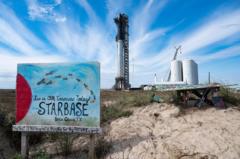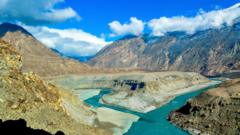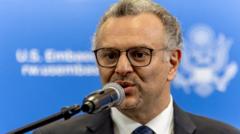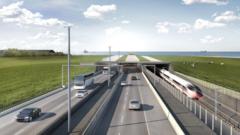The highly anticipated Grand Inga Dam project is at a critical crossroads, with delays, funding issues, and international partner withdrawals jeopardizing its potential to become the world's largest hydroelectric dam. Critics highlight environmental concerns and inadequate local benefits as significant roadblocks to the project’s future.
Grand Inga Dam: A Dream Deferred in the Heart of Africa
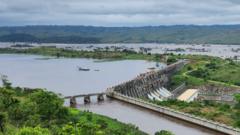
Grand Inga Dam: A Dream Deferred in the Heart of Africa
The ambitious Grand Inga Dam project in the Democratic Republic of Congo faces significant setbacks as investors pull back and political challenges loom, threatening its role in addressing Africa's electricity crisis.
The Grand Inga Dam project, envisioned as a transformative energy solution for Africa, is facing substantial hurdles that threaten its future. Located on the Congo River in the Democratic Republic of Congo (DRC), the dam promises to produce more electricity than China’s Three Gorges Dam and could vastly improve the power landscape for millions in sub-Saharan Africa. However, decades of planning have not yet materialized into construction.
Despite DR Congo’s government maintaining that the project is underway, critics cite extensive delays, the country’s tumultuous governance history, and potential environmental devastation. The recent withdrawal of China’s Three Gorges Corporation, a crucial partner, has further muddied the waters. There are reports that the Chinese firm exited due to dissatisfaction with how President Félix Tshisekedi is managing the project. These developments come alongside concerns regarding the staggering estimated cost of $80 billion in a nation grappling with persistent poverty.
The need for reliable electricity is acute—over 600 million people lack access in sub-Saharan Africa, according to the International Energy Agency. The vision for an interconnected energy network, promoting regional cooperation among countries such as South Africa, Angola, and Namibia, was initially conceived in the early 2000s. The ongoing work of the two existing dams, Inga I and II, along with proposals to construct an additional six dams along the river, reveals DR Congo’s potential as a powerhouse for energy in the region.
Yet, skepticism looms. Inga I and II operate at only 80% of capacity, raising questions regarding the DRC's ability to deliver on its promises. While the World Bank has resumed discussions with the Congolese government, optimism remains tempered by the palpable lack of tangible progress and investment mobilization.
Experts argue that routine delays are a standard part of infrastructure projects, yet the persistent issues unique to the DRC—corruption, lack of fiscal commitment, and ongoing internal conflicts—complicate the situation. Potential investors are wary of sinking funds into a project that may deliver little return for decades.
Concerns regarding the social and environmental impacts of the Grand Inga Dam cannot be overlooked. Advocacy groups highlight the potential displacement of 37,000 residents, compounded by unease over the environmental degradation that such large-scale development often incurs. Critics argue that the energy produced may primarily benefit neighboring countries and mining interests while leaving the Congolese population without access to crucial electricity.
In summary, the Grand Inga Dam remains a tantalizing but distant prospect, clouded by challenges that reflect the complexity of large infrastructure projects in politically volatile regions. Without securing the necessary funds and addressing stakeholder concerns, this grand vision risks becoming yet another deferred dream in the heart of Africa.





